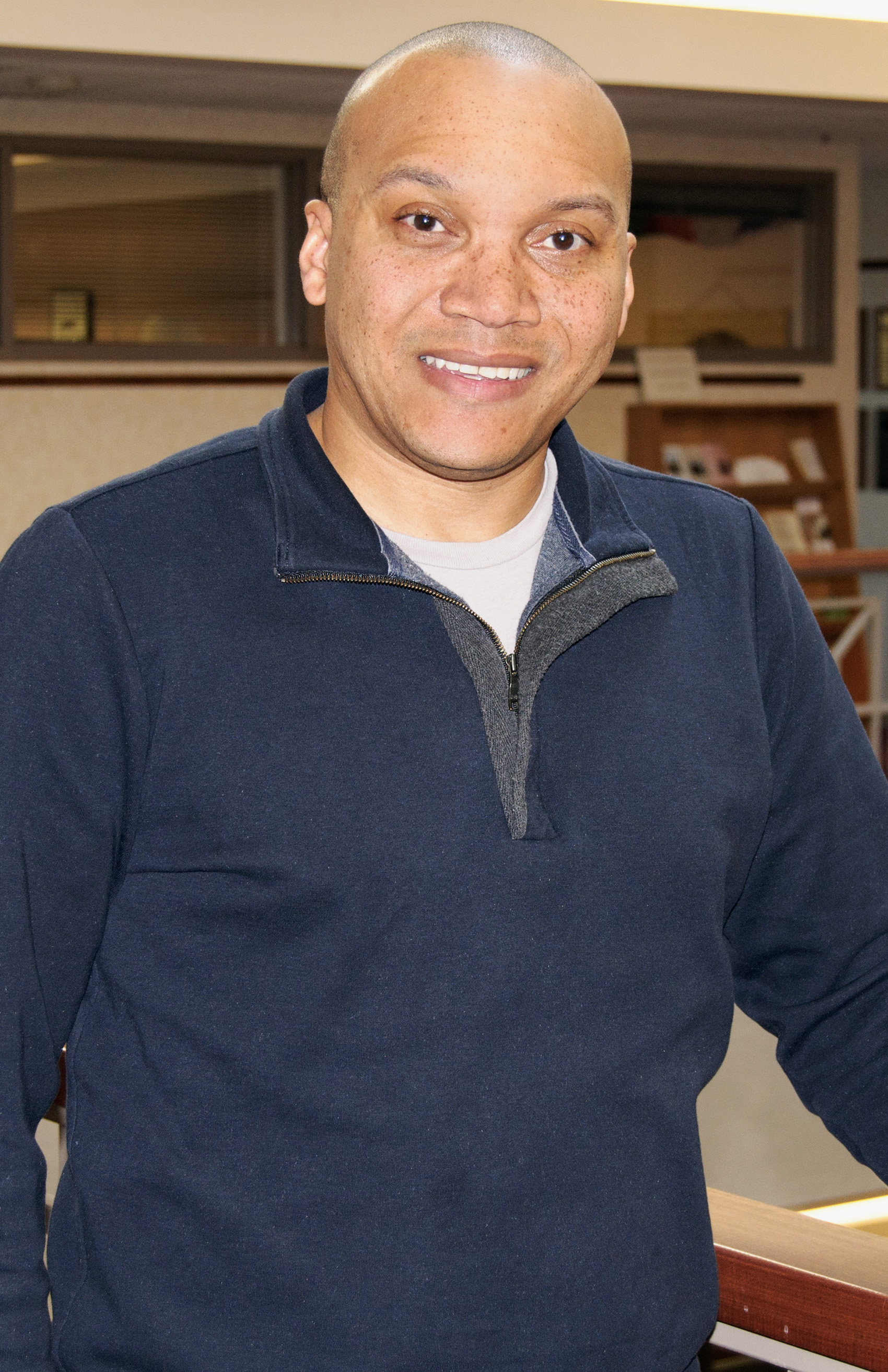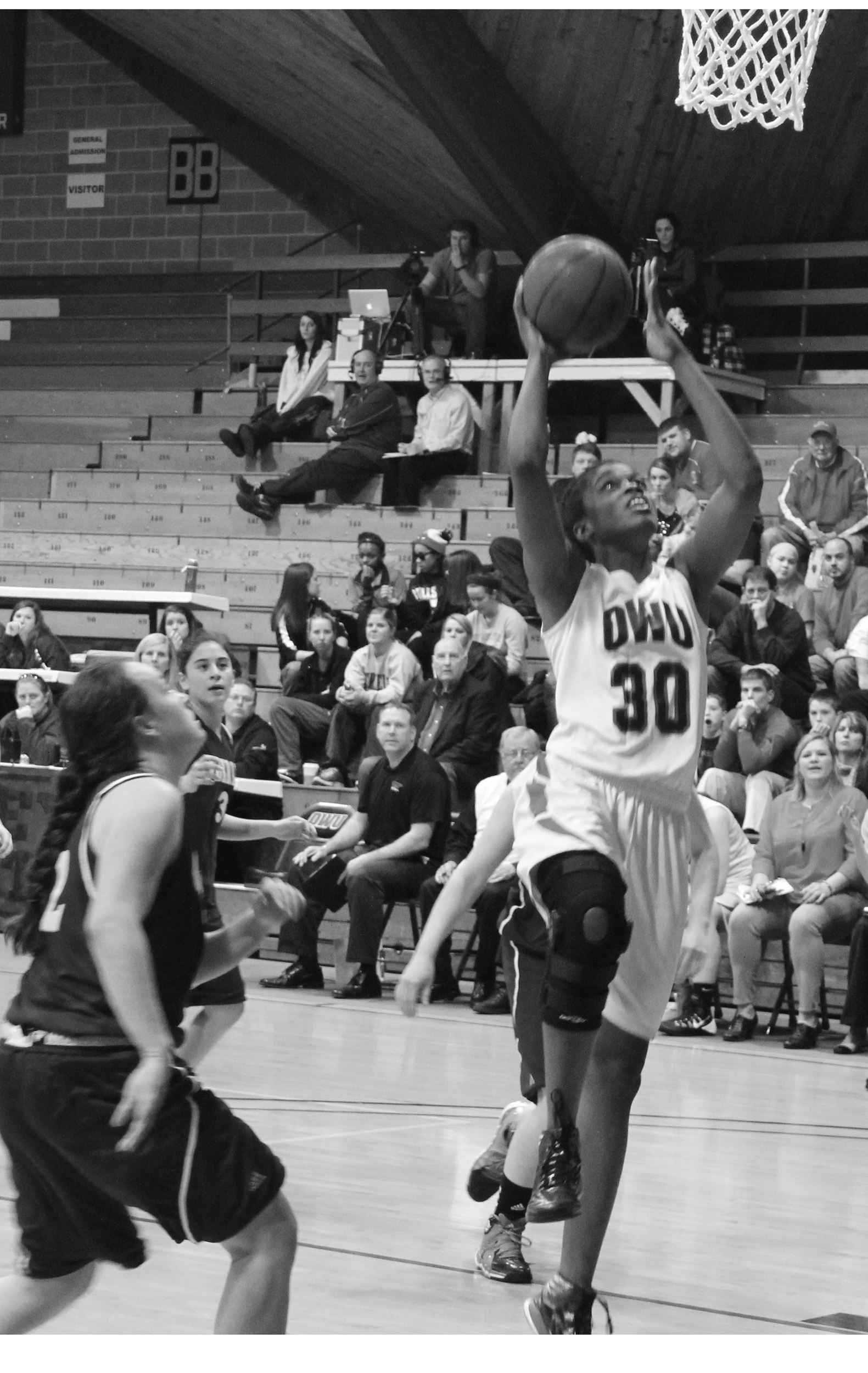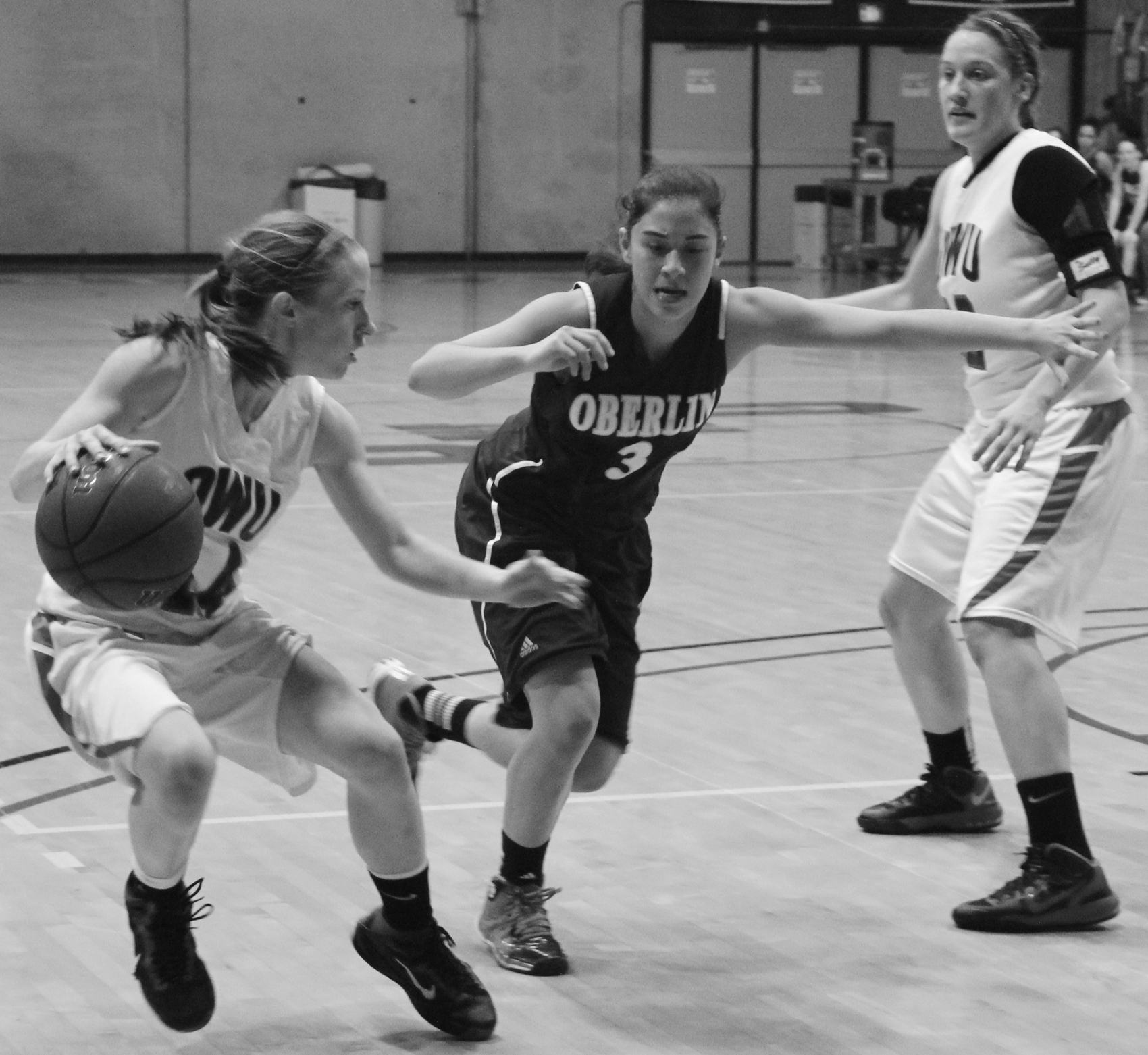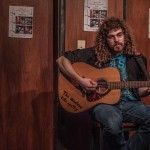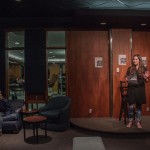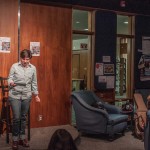The day before their performance, Pitch Black debuted their set to students in Hamilton-Williams Campus Center. Afterwards, I sat down with several members to discuss their goals for ICCA, their nicknames and why they joined.
“Why did you choose those songs and how did you come up with the arrangements?” I ask first.
“The way that we do songs is that anyone in the group can arrange something for us and those just happened to be songs that people in the group were excited to arrange,” says junior Anna Jones, Pitch Black president. “Would anyone who arranged them want to talk about them?”
Junior Brianna Robinson and sophomore Alanna Spalsbury did the arranging, but only Robinson is there.
“I arranged ‘Tonight I’ll Be Your Sweet Dream’ and the reason why it happened is because I was singing ‘Tonight (I’m Lovin You)’ because I was going to arrange that for Pitch Black and my sister just started singing ‘Sweet Dreams’ on top of that,” Robinson says. “I was like, okay, so I just mashed them together.”
“And I know for ‘Can’t Hold Us’ we really wanted to do something that wasn’t really considered a woman’s piece, we wanted to add that girl power – we can rap too,” freshman Kelly Summers adds.
“What goes into arranging a song?” I ask.
“Hours of frustration,” Summers says, and everyone laughs.
“Pretty much what I do, I just listen to songs – I’m a music major, so this comes a little easier I guess,” Robinson explains. “But I just listen to the songs and I listen to the chords and put those chords into each voice part and make chords with each voice part and that’s just how it happens. Just make some different vowel sounds, like ‘doos’ and ‘jadas’ and ‘jinns.'”
“Bow wows,” chimes in sophomore Emma Sparks.
“And it ends up being what it is,” Robinson finishes.
“Experimental work,” Summers concludes.
“How much work did you have to do?” I ask next.
“It didn’t take me very long,” Robinson says.
“It doesn’t take Brianna very long,” echoes sophomore Maeve Nash, vocal percussionist.
“Brianna’s pretty quick,” adds Jones.
“She’s like (this,)” says freshman Taylor Davis, pointing to her head and then miming writing out the notes instantly.
“It depends on the person. I think that’s the best thing to say,” Robinson says modestly.
“And how motivated you are to do it,” Summers adds in.
“Were there other changes to the lyrics, besides the mashups?” I ask.
“In ‘Can’t Hold Us’ we just changed some stuff to make it personalized to us,” Nash says – she would know, she’s one of the lead soloists.
“We say ‘Return of Pitch Black’, ‘My posse’s been on the JAY’ except we’re saying ‘Broadway’ at ICCA cause I don’t think they know what the JAY is. And we say ‘Got that Beyonce dress game and diva in my style.’…Then we say ‘When OWU raised you’ and then ‘Pitch Black ICCA’ instead of ‘And all my people say.'”
I ask what expectations they have for ICCA, and get a lot of responses.
“We expect it to be awesome,” say both Robinson and Jones.
“Yeah, it’ll be so much fun,” Nash says.
“Explosions,” says senior Cara Slotkin; Davis says “Fire.”
“We’re going to have fun, and every year we’ve gotten a better score than the year before, so I think that’s our goal. As long as we do that we’ll be happy,” Jones says.
“And also, just being able to see other groups who do the same thing as us and love just being in a capella, is really, really an awesome experience for us,” Robinson adds.
“It’s really an experience,” Jones tells me.
“How did you do the other two times?” I ask.
“We did not place, but like I said each year we’ve gotten better scores,” Jones says.”…First and second move on, third is like the runner-up, and then they don’t announce the rest.”
“What has to go on to be selected (for Pitch Black)?” I ask.
“There’s an audition process, people come in and sing a few minutes of a song, and then that’s pretty much it,” Jones explains.
Junior Emma Buening adds that they also have prospective members test the vocal scale as well.
Why did you all decide to join, I ask.
“I’ve always loved to sing, and I wanted to do it in an atmosphere that everyone else had a passion for it,” Slotkin says.
“I saw Emily Knobbe (a former Pitch Black officer)…doing this acoustic set the first week of school when I was a freshman,” Buening explains. She tried out after seeing this, but didn’t make it her first time.
For Davis, coming to Ohio Wesleyan and living in a dorm made practicing her singing difficult.
“I walked on the JAY and I saw Pitch Black and I knew and I signed up (for an audition),” she says.
For Nash and sophomore Abby Hanson, their interest in Pitch Black came before they were students.
Hanson saw them perform at an Admissions event and was encouraged to try out by her father.
“I didn’t audition my freshman year but I auditioned this year and I got in and it’s super exciting,” she says.
Nash had a similar experience.
“I decided I wanted to be in Pitch Black before I decided I wanted to go here,” she says. “So I came and I already had red and black stuff just in case I got in.”
A year later, Nash was in class with sophomore Emma Sparks.
“Maeve actually told me about it,” Sparks says. “…I was like, ‘What, that’s here? Yeah I’ll do it.’”
“(I was) Pitch Black before Pitch Perfect was a thing,” says Slotkin, referring to a 2012 comedy movie about college a capella groups – it’s the source of many inside jokes.
“I am a lover of music, that’s the biggest reason,” Robinson tells me last. “Pitch Black, before I was in it, (I saw) it was so good and I saw how everyone who’s in that group just really really just loves to sing together and that’s what I wanted.”
During their performance and interview, all Pitch Black members wear group t-shirts, with their nicknames on the back; I ask about them.
“I’m Kels of Steel,” Summers tells me.
“Because I call her that,” Hanson adds.
“She was Abs of Steel, and I’m Kels, so Kels of Steel,” she finishes.
“Abs of Steel” isn’t Hanson’s Pitch Black name, though – “Lil Bow” is.
“One time Brianna (Robinson) forgot my name,” she says. Everyone laughs, and Robinson covers her face. “I was wearing a shirt with a bow on it, and she was like, ‘Umm, bow!'”
“I am ‘Pitch Momma,’ because I’m the momma of the group, let’s be real ladies, come on,” Slotkin says.
“Mine says ‘Madam Prez’ because no one could think of something cooler,” Jones adds.
“That’s not true!” Sparks protests.
“Because we met in French class,” Buening adds. “And you’re the president.”
Davis claims she doesn’t know how she got her name, ‘Diva Hands.’
But her hand gestures while she speaks show it anyway.
“She auditioned like this,” Slotkin says, waving her hands about in a light-hearted imitation.
“Look at how she just said that — ‘I don’t know why, but for some reason…'” Jones adds, waving her hands around as well – everyone does, and laugh.
“Mine is Holy Maeve,” Nash says. Last year, they needed a beatbox and she gave it a try.
“I beatboxed and everybody started going, ‘Holy Maeve!'” she explains.
“Maeve was like, ‘I can beatbox’ and this is like halfway through the year,” Jones adds.
“We’re like what,” — Jones whips her head around to look at Maeve — “It was actually Pitch Perfect before Pitch Perfect.”
“Yeah, that’s what happens in Pitch Perfect,” Nash says, remembering a similar scene.
“Exactly,” Jones says.
“My nickname is Queen Bri,” Robinson says. “…I really love Beyonce and I want to be her but I can’t be so I made it Bri instead of Be because I can’t live up to that, but still.”
“She’s close,” Jones says.
“You can call me Queen Bri,” Slotkin sings.
“I’m Em the Gem, because my last name’s Sparks, and gems sparkle,” Emma Sparks says.
“I’m Emma Honey, because I’m the lesser known Emma, and always in practice you’ll hear someone (say), ‘Emma, Emma’ and I always look and it’s never for me, ever. Very rarely,” Emma Buening explains.
“And so I was like, guys, we need to distinguish when it’s this other Emma (points to herself) because I don’t want to be ‘the other Emma’ and lovely, lovely Queen Bri said that I should be Emma Honey.”
“Her voice is like honey, it’s warm, its smooth, and that’s what it is,” Robinson elaborates.
“How long have you been practicing specifically for ICCA?” I ask.
“Since like November,” Jones tells me – but I get some less serious answers as well.
“Three years,” from Kelly Summers; “Forever,” from Abby Hanson, and “Yesterday,” from Brianna Robinson.
“So, November, three years or yesterday?” I ask, and everyone laughs.
“November,” Jones says.
“Officially, November. We’ve been preparing our whole lives for this moment together,” she says, and everyone laughs again.
Sparks was ready to sing from her very first moment. “I came out wearing black and red (the colors of Pitch Black,)” she says, and everyone laughs.
“This is getting out of hand,” Robinson says. “Are there any other questions?”
There aren’t, and we wrap it up there.
